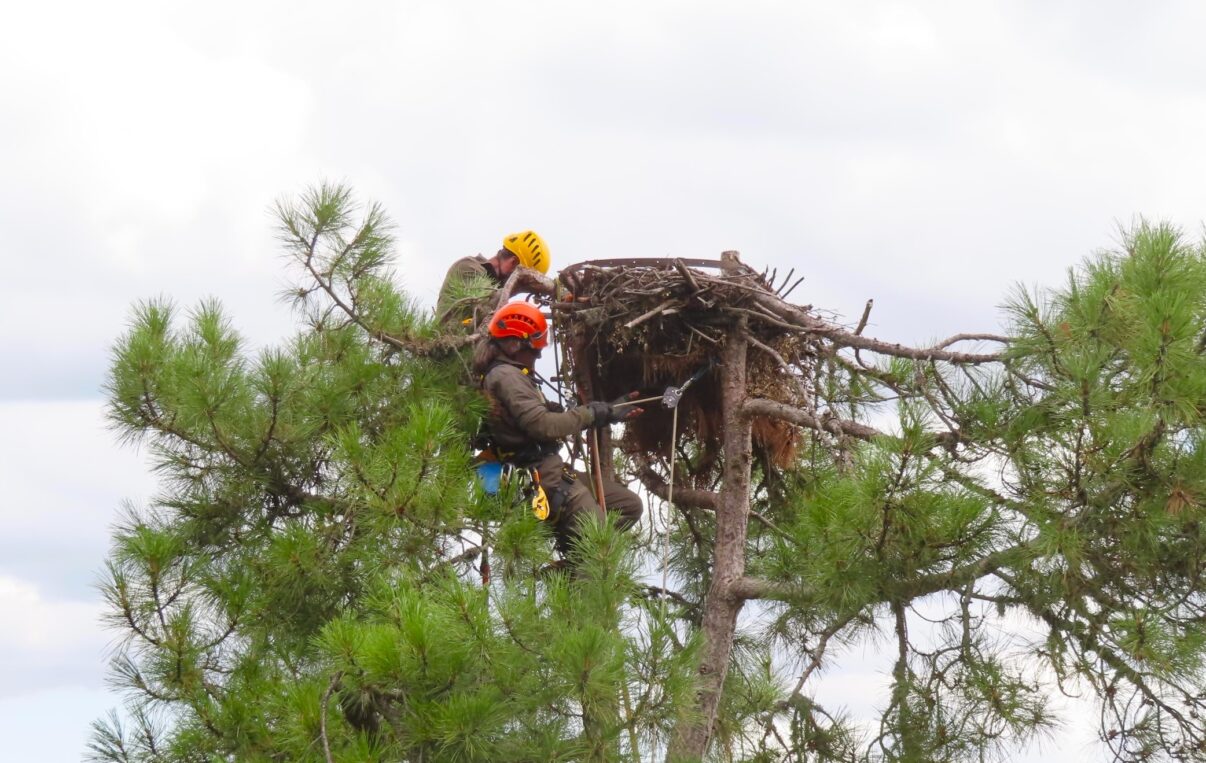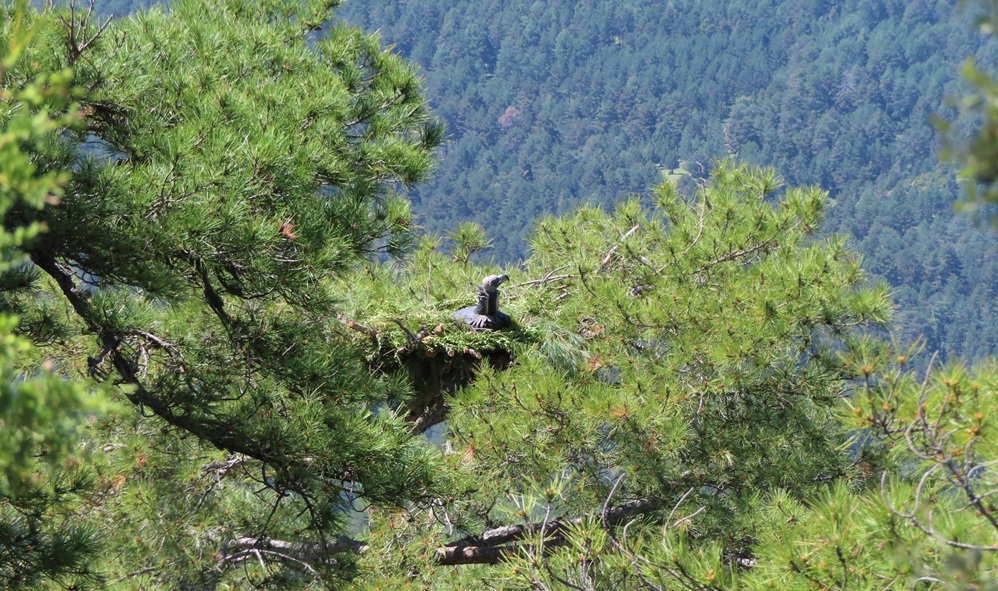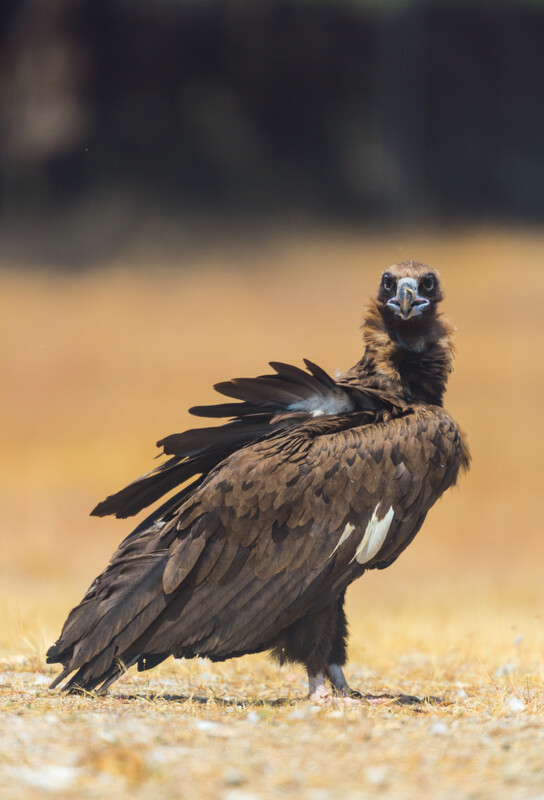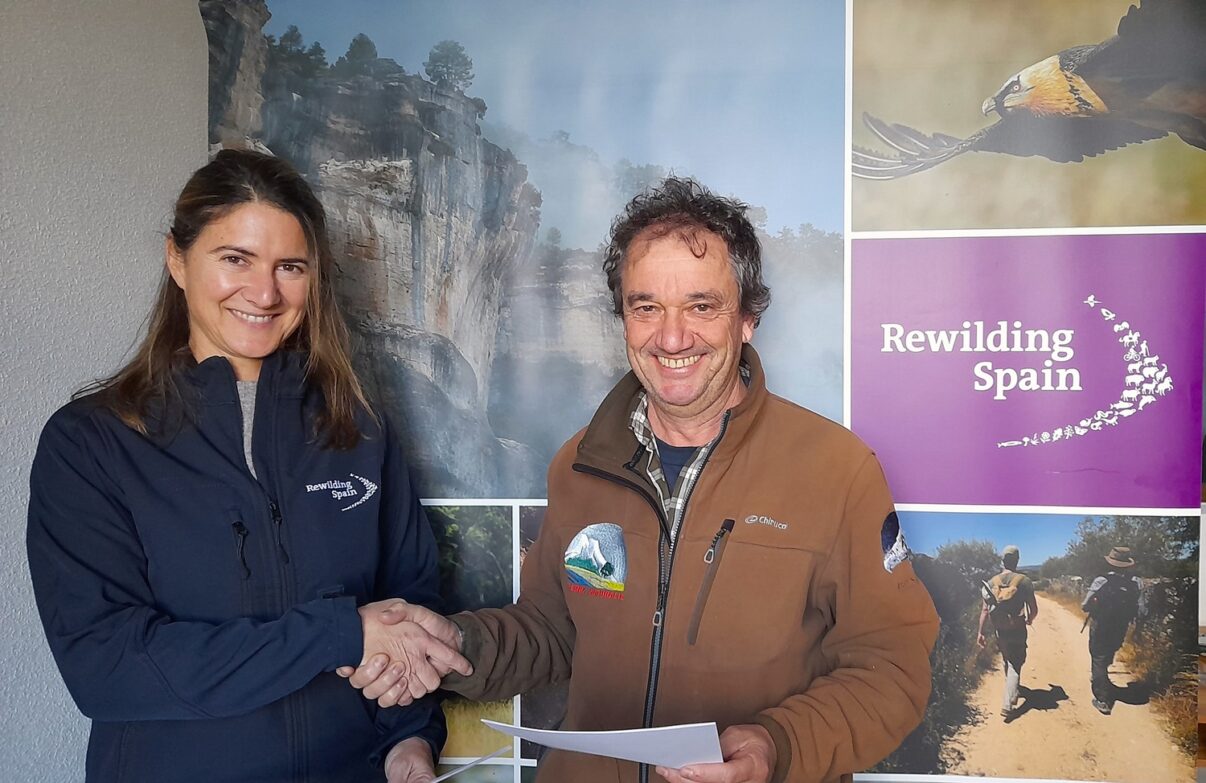Five new artificial nests for black vultures (Aegypius monachus) have been built in different areas of Alto Tajo Nature Park with the aim of adding favourable conditions to facilitate the settlement of this species in the area.

Unlike their griffon relative, black vultures nest in the treetops; these new platforms make a total of 21 nests that have been built in the Alto and the Serranía de Cuenca areas in order to facilitate the definitive comeback of the species to the Iberian Highlands. Two of these nests are equipped with life-size decoys.
The construction of these nests has been carried out within the framework of the black vulture reintroduction programme that is promoted by the Regional Government of Castilla-La Mancha and began in 2020. Practical work is being implemented on the ground by Rewilding Spain and Terra Naturalis association.

Thanks to this programme, a total of 17 specimens of this scavenger bird have already been released in the landscape. The most recent group was made up of seven individuals that were released last month of June, after spending six months in an adaptation cage located in the Alto Tajo Nature Park and being equipped with GPS transmitters that allow to monitor their movements. The

monitoring has allowed to verify that a significant number of the vultures released in the area are still moving in the Iberian Highlands.
Monitoring also brings hopeful news for the future, as one of the first specimens of the programme that was released in the territory and is now reaching its reproductive age, sleeps regularly in the sorroundings of one of the nests, so it can be expected that it will eventually mate and settle in the area. This would be a milestone for the programme and a powerful attraction for other birds.
Throughout 2023, other improvements have also been made in order to improve the conditioning and the video surveillance system of the adaptation cage, which is now ready to receive new specimens for the reintroduction programme. The black vultures released so far came from different Wildlife Recovery Centres in Castilla-La Mancha, where they had arrived due to various physical problems.
Recolonisation of the bearded vulture
Rewilding Spain and Terra Naturalis are also partnering with the Junta de Castilla-La Mancha Region for the return of the bearded vulture (Gypaetus barbatus) to the landscape, where this scavenger has been extinct since the mid-20th century. For this purpose, six supplementary feeding points are maintained in different places in the provinces of Guadalajara and Cuenca, so that the dispersing specimens that fly around feel attracted to these spaces where their feeding opportunities are stable and easy to find for them. These feeding points are also monitored with photo-trapping, which makes it possible to check the presence and the behaviour of the bearded vultures that reach them.
There are already thriving populations of griffon vulture (Gyps fulvus) and Egyptian vulture (Neophron percnopterus) in the Iberian Highlands. Cinereous vulture and bearded vulture’s comeback will strengthen and ensure the important role that necrophagous birds play in the food chains of healthy ecosystems.
Partnership agreement with Terra Naturalis
The technical execution of all this work is carried out by Terra Naturalis and Rewilding Spain, which have just renewed their collaboration agreement to continue promoting the programme in 2024.

Terra Naturalis is a non-profit organisation whose objectives are the conservation of nature, the promotion of sustainable development and the enhancement of natural, cultural and ethnographic heritage. In addition to its work with the black vulture and the bearded vulture, their action lines also include the protection of various species of steppe birds.
Want to know more?
